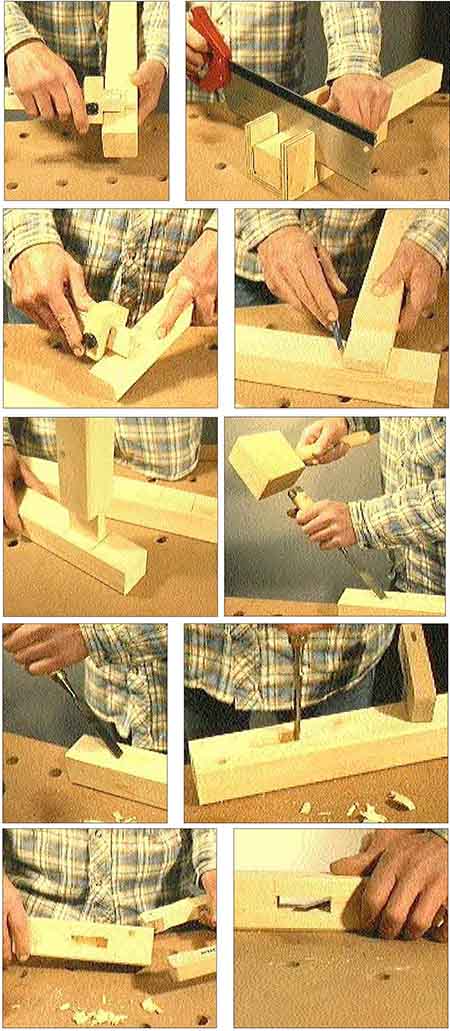
Holz votes: Working with the gouge – This is how cones are made, Slots and recesses by hand.
Dealing with chisels and chisels is part of the basic training of every carpenter and should also be practiced by seebers, before the first workpiece is created.
Contrary to popular belief, Stemm- and chisel (or. Chisel) not the same. Chisels have a rectangular blade and are used for rough work. The carpenter mainly uses chisels. Its blade is beveled on the sides. This allows them to reach sharp corners and prevent them from getting stuck. The handling is the same for both: They are driven into the wood by striking a hammer, cut through the wood fibers and remove a correspondingly strong chip.
The slot and tenon make a stable and durable connection. In this way, frames and frames for furniture and load-bearing components are created.
With the marking measure, dimensions for chiselling and saw cuts can be transferred absolutely evenly.
The sides of the recesses are sawn in with the precision saw, that the scribed lines just remain visible.

Now the falling wood is worked out with the chisel in small pieces at an angle from the outside to the center.
To smooth the bottom of the recess, the iron is guided flat by hand. This is how you take off fine chips.
Remove the overlap
Overlapping is used to stiffen the cross- or corner connections. To do this, the recesses must be excavated across the entire width of the workpiece across the grain. To prevent tearing out, are the side cuts of the recesses, which run across the grain, cut with the precision saw and only the scrap wood in between was dug out at an angle from the outside to the center with the chisel. In this way, half the material thickness is removed from both parts of the overlap.
Work towards the mark
Whether slot, Groove or recess, as a basic rule: The waste wood is stung, from the middle to the scratch. The cutting edge is guided with the fiber or across the fiber. The iron is guided against the fiber, can either tear up the wood, or the iron goes off the track. The chips should always be cut off as short as possible and dug out layer by layer.
Tenon joints
When properly executed, the slot and tenon are the most stable wood connection. The tenon should not be thicker than a third of the total wood thickness and is cut first. With continuous slots, the tenon can be cut a little longer and planed flush after the glue has dried. The slot must be cut out like this, that the pin is tight, but can be inserted without violence. Is the slot too narrow?, the pin can burst the workpiece.
Glue printing
With offset tenons, which do not reach through the entire cross timber, this can be burst when the connection is glued by the glue pressure. To avoid this, all edges of the tenon should be slightly chamfered. This allows the excess glue to rise in the corners and well out of the mortise. Remove excess glue immediately.
The thickness of the tenon is marked with the marking measure all around up to the chest line.
First saw in the chest lines up to the mark. The slots in the miter box guide the saw and ensure precisely vertical cuts.
Now the tenon width is transferred to the counterpart as a measure for the slot width with the mark out measure.
The length of the slot can most precisely be transferred directly to the wood with the cut tenon.
Check the slot dimension, before you start cutting, by placing the tenon on the surface.

Choose a chisel the width of a slot and start cutting in the center of the waste wood.
Cut out short chips layer by layer until just before the scribe line.
When you are about halfway down, the edge is cut off exactly vertically and the falling wood is removed with the iron.
Now turn the workpiece over and work the second half from the back into the corners.
The last thing is to use the flat chisel, Possibly. also with a file, the slit walls smoothed.